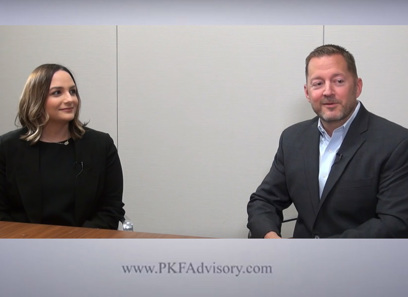Comprehending the Basics of Mergers and Acquisitions for Company Growth
Mergers and procurements (M&A) stand for critical strategic choices for companies seeking to improve their affordable placing and drive growth. Comprehending the nuances of various merger types-- straight, vertical, and conglomerate-- acts as a structure for lining up and identifying prospective synergies with business purposes. The course to successful M&A is filled with difficulties that need careful preparation and execution. As companies browse this complex landscape, the ins and outs of the M&A procedure and the key players included end up being essential to attaining preferred end results. What aspects ultimately identify success or failing in these transformative ventures?
Definition of Mergers and Acquisitions
Mergers and purchases (M&A) represent tactical transactions where firms settle their procedures to improve growth, market share, or competitive benefit. A merger usually entails two business integrating to develop a brand-new entity, frequently with a shared vision and shared advantages. On the other hand, a purchase occurs when one business purchases one more, presuming control and incorporating its procedures right into the customer's structure.
These transactions are driven by various motivations, including the need to achieve economic climates of scale, branch out item offerings, get in brand-new markets, or acquire innovative modern technologies. M&A task is an essential element of corporate technique, allowing companies to adapt to transforming market conditions and respond successfully to affordable pressures.
In addition, effective M&A deals need thorough due diligence, careful negotiation, and effective integration preparing to understand the anticipated synergies. The intricacy of these transactions emphasizes the relevance of legal, monetary, and functional considerations, in addition to the demand for placement between the business cultures of the merging entities - M&A. Ultimately, M&A works as a powerful tool for companies looking for to place themselves for sustainable development and enhanced earnings in an ever-evolving organization landscape
Kinds Of Mergers and Acquisitions
While the landscape of mergings and procurements includes a range of strategies, they can mainly be categorized into several unique types based on their nature and objectives. The most common types include straight, vertical, corporation, and market-extension mergers.
Straight mergings happen in between business running in the exact same sector and at the very same stage of manufacturing. This type aims to settle market share and lower competitors. Vertical mergings, on the various other hand, entail firms at different stages of the supply chain, permitting improved performance and control over production procedures.
Corporation mergings involve companies from unassociated sectors, focused on branching out line of product or getting in new markets, thus reducing danger direct exposure. Market-extension mergers take place in between companies in various geographical markets yet within the exact same industry, enabling them to broaden their customer base and improve market reach.
Each type of merger or acquisition serves distinctive critical objectives and can considerably influence the resulting company's operational dynamics, market setting, and growth trajectory. Understanding these groups is essential for services considering M&A as a pathway for development and affordable advantage.
Trick Gamers in M&A

Investment lenders site play a critical function, working as intermediaries who help with arrangements and supply valuation insights. Their competence helps both parties browse intricate financial landscapes, guaranteeing reasonable and fair terms. Legal consultants are likewise important, as they make certain compliance with regulatory frameworks and handle threat by preparing and examining agreements.
Furthermore, financial experts assess the economic health and wellness of both entities, determining harmonies and go to this website projecting post-merger efficiency. Company development teams within companies are in charge of planning and determining prospective targets on purchase techniques.
M&A Refine Overview
The process of acquisitions and mergers (M&A) generally includes a number of distinct phases that call for mindful preparation and implementation. The procedure starts with tactical planning, where firms recognize their objectives and goals for the M&A, such as market expansion or diversity. This is adhered to by target identification, throughout which prospective purchase targets or merger companions are investigated and evaluated for compatibility.
As soon as ideal candidates are identified, the due persistance phase commences. This essential action involves a thorough exam of the target business's financials, operations, and lawful standing to recognize any possible threats. After due diligence, the arrangement stage takes area, where the terms of the bargain, including price and framework, are talked about and set.
Upon reaching an arrangement, the deal relocates to the implementation phase, including the drafting and signing of lawful files. Ultimately, the combination stage occurs, where the firms work to incorporate their procedures, systems, and cultures successfully. Effective assimilation is essential for realizing the expected harmonies and take advantage of the M&A. Each phase is important, calling for cooperation among various stakeholders to make sure a smooth change and lasting success.
Advantages and Obstacles of M&A
Acknowledging the potential for development and boosted market share, business often seek acquisitions and mergings (M&A) to take advantage of on strategic benefits. The primary benefits of M&A consist of enhanced operational effectiveness, broadened product offerings, and accessibility to brand-new markets.
Nonetheless, the challenges associated with M&A are considerable. The economic effects can be daunting; the costs of the purchase process, including lawful costs and due persistance, can be substantial.
Furthermore, regulative examination can make complex the M&A landscape, calling for companies to browse complex legal requirements. In summary, while M&A can be a powerful tool for development, business need to consider the possible advantages versus the integral challenges to make certain effective combination and long-lasting value development.
Final Thought

Mergers and purchases (M&A) represent calculated purchases where firms settle their operations to enhance growth, market share, or competitive Look At This benefit - M&A. Inevitably, M&A serves as a powerful tool for business looking for to position themselves for lasting growth and boosted success in an ever-evolving service landscape
At the leading edge are the acquirers and target business, whose tactical goals drive the incentive for M&A. The procedure starts with critical planning, where companies identify their objectives and purposes for the M&A, such as market growth or diversity.Recognizing the capacity for development and enhanced market share, companies frequently seek purchases and mergers (M&A) to take advantage of on tactical advantages.